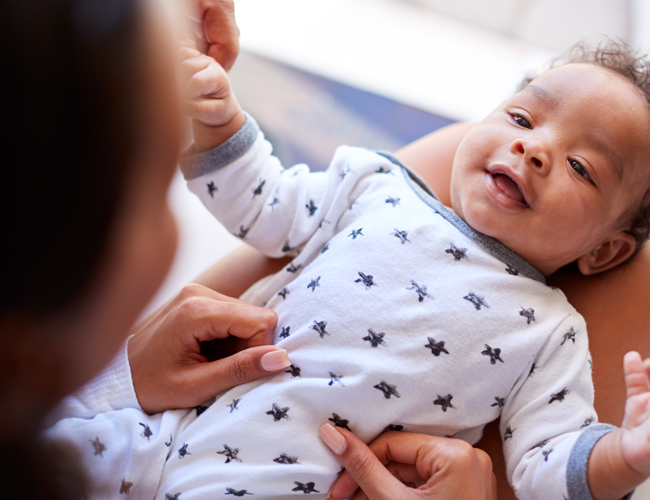Your baby's first year
The first year of your baby’s life is full of fascinating moments. These milestones aren’t just exhilarating – they are also important markers to your baby’s development.
Most parents know what to look out for, but there are certain key milestones that are worth paying close attention to during your baby's first year. However, don’t be too concerned if she is lagging slightly either. “Babies develop at different rates, and some also have spurts in one area of development while lagging in another, and this is perfectly normal. As long as your baby is showing signs of moving towards the milestones for her age, she should be fine,” says Joan Orr, early childhood development specialist.
Here are some of the milestones to look out for in your baby’s first year:
Three months
According to Unicef, babies this age see things best when they are between 20-30cm away. At this stage, they have a greater range of vision and should soon start tracking your finger with their eyes. Move your finger from left to right around 30cm from your baby's face and see if they follow with their eyes. Their hearing is also getting stronger; notice if your baby is alerted by sounds and turns towards them.
Six months
This is the age at which most health providers recommend a baby start eating solid food in addition to breast milk.
According to the Academy of Nutrition and Dietetics, a baby is ready to try solids if:
· They are sitting up with minimal support
· They have good head control
· They can grasp small objects and/or bring objects to their mouth
Early language development also starts to take shape from now on. It begins with babbling, which is considered a major milestone in typically developing infants as outlined in the Infant Behaviour & Development medical journal. Help your baby’s language to develop by talking to them, and being expressive in your tone so they start to learn the different nuances.
Seven to nine months
Your baby is starting to act like a little person now. They're displaying a range of emotions, imitating speech sounds and exploring the world, according to Orr. They're also getting ready to crawl next, so they may be trying to move onto all fours, says Dr Nicole Hilburn, a paediatric physiotherapist.
You’ll start seeing these changes in the next two months:
- They’ll lift and extend their legs when lying on their tummy.
- On their back, your baby can lift their upper body off the floor using their arms, and roll over easily.
- They can sit with minimal support and may lean forwards
or sideways to grasp objects.
- They can use their thumb and fingers to grasp objects.
- Depth perception is now present and they display a fear of falling.
- They show a desire for social interaction, laughing at familiar faces and raising their arms to be picked up.
Up to one year
Your baby should be learning to crawl around this time, and eventually getting ready to take their first steps. Their emotional and cognitive abilities are also expanding and they could understand up to 50 words.
IMAGE CREDIT: Getty Images

